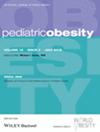Recent prevalence and trends of obesity and metabolic dysfunction-associated steatotic liver disease (MASLD) among US adolescents: 1999 to 2020
Abstract
Background
Metabolic dysfunction-associated steatotic liver disease (MASLD), previously known as non-alcoholic fatty liver disease (NAFLD), is understudied among US adolescents despite rising obesity rates.
Methods
This study analysed the prevalence and trends of obesity and MASLD among US adolescents aged 12–17 using data from the National Health and Nutrition Examination Survey (NHANES). We developed a new screening model utilizing FibroScan-measured controlled attenuation parameter (CAP) scores, body measurements and blood chemistry data from 2017 to 2020 to assist in analysing MASLD trends from 1999 to 2020.
Results
Between 2017 and 2020, the prevalence of obesity and MASLD was approximately 20%, with about 70% of obese adolescents affected by MASLD. The condition was more common in boys, particularly among Mexican American adolescents. Additionally, 97.2% of those with NAFLD also had MASLD. Adolescents with MASLD had significantly higher body weight, waist circumference, triglyceride levels and alanine transaminase (ALT) levels, along with lower high-density lipoprotein (HDL) cholesterol and an increased risk of liver fibrosis. Insufficient physical activity and poor diet quality were key risk factors for developing MASLD. From 1999 to 2020, the prevalence of MASLD rose significantly, paralleling the increasing rates of obesity.
Conclusions
The study underscores the pressing need to screen at-risk adolescents for metabolic issues associated with steatotic liver diseases, given the rising obesity rates among adolescents. The high overlap between MASLD and NAFLD diagnoses indicates that the transition from NAFLD to MASLD can be effectively integrated into paediatric practice.

 求助内容:
求助内容: 应助结果提醒方式:
应助结果提醒方式:


